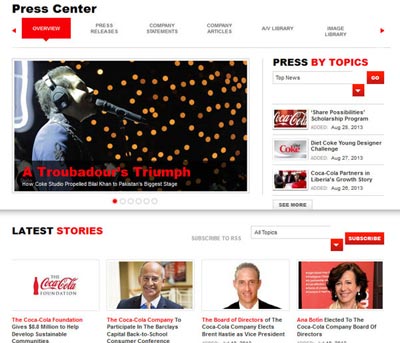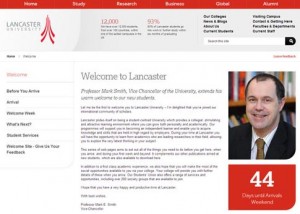 Ever remember handing out a bulging folder packed with all your company’s details, press releases, and bios, called a ‘press kit’? Well the good news is, no-one has to lug around those heavy folders any more.
Ever remember handing out a bulging folder packed with all your company’s details, press releases, and bios, called a ‘press kit’? Well the good news is, no-one has to lug around those heavy folders any more.
The Digital Switchover
Since the digital age is upon us, press kits as we know them have changed immensely, moving into an online format now known as a ‘newsroom’. The beauty of this new format is that, not only can you file as much as you want in there and it will never get any heavier, but you can also keep it organised and updated with the click of a mouse, and it is the most efficient and simple way for press to get as much info as they need on your company.
It sounds like a dream come true for both PR and companies alike; however it hasn’t quite gone as planned. Without the physical boundaries you would assume the online newsrooms would be overflowing with useful content, but instead many companies are still neglecting to maintain their newsrooms, leaving them sparse and far from the resource they should be.
How does your newsroom shape up?
The following article is the second in a series which aims to highlight areas in which a newsroom should be optimised in order for it to be useful and interesting to your journalist contacts, with some examples of excellent newsroom best practices from some of the world’s largest corporate websites to demonstrate how online newsrooms should function.
Newsroom Essential: Press Releases
Unlike the days of the physical press kit when you needed to be wary of how much paper you were using and had the physical boundaries of the folder, you don’t need to be stringent when it comes to the press releases. Yes, you should still be conscious that you aren’t letting the best and most attractive releases get hidden under less relevant ones, but you don’t need to limit yourself to only putting out only the most important news.
Offering up a range of press releases about what your company has been involved in and any changes you have made might not always make headlines, but it still gives press contacts background information on your company’s development. There may come a time when a major advance happens within your business that has been the result of many smaller changes, and the press releases give a backlog of information on the smaller events leading to the main finale.
So to enable journalists to look at both new and old press releases at their own leisure, archives within categories (if applicable) are a great way to keep the older news out of the spotlight but make it easily searchable and accessible when needed. As most journalists will most likely be looking to your press releases for information on recent events, then do keep up to date press releases in a more prominent position, but make it clear there is the option to view older ones if they wish.
 Coca-Cola are a fine example of an excellent system for finding press releases, whether it be by particular keywords and topics, or by date, they make it really easy for you to pinpoint what you need and even offer you some inspiration in the form of their ‘top news’ category.
Coca-Cola are a fine example of an excellent system for finding press releases, whether it be by particular keywords and topics, or by date, they make it really easy for you to pinpoint what you need and even offer you some inspiration in the form of their ‘top news’ category.
Don’t get bogged down in the ‘traditional’ press release format either. Online press releases both require and allow you to be a little more creative. Offering both HTML and printer friendly versions of press releases online is a must, but there is also the option to get more creative with the format. Social media releases are a popular alternative to the traditional press release, and can include images, videos, links and more, meaning they are fast growing in popularity among media communities.
Like this article? Read the first article in this series, Online Newsroom Essentials: Media Contacts and keep an eye out for the next article in the series on including media coverage.
I graduated in 2011 with a 2:1 degree in BA HONS Journalism and have since set up my own freelance business specialising in digital marketing. I write for a variety of digital marketing blogs as well as working on blogs and social media channels for clients in a range of B2B sectors.
You can catch me on the following social media channels:
Twitter: NatJWilson;
LinkedIn;
Google+.


